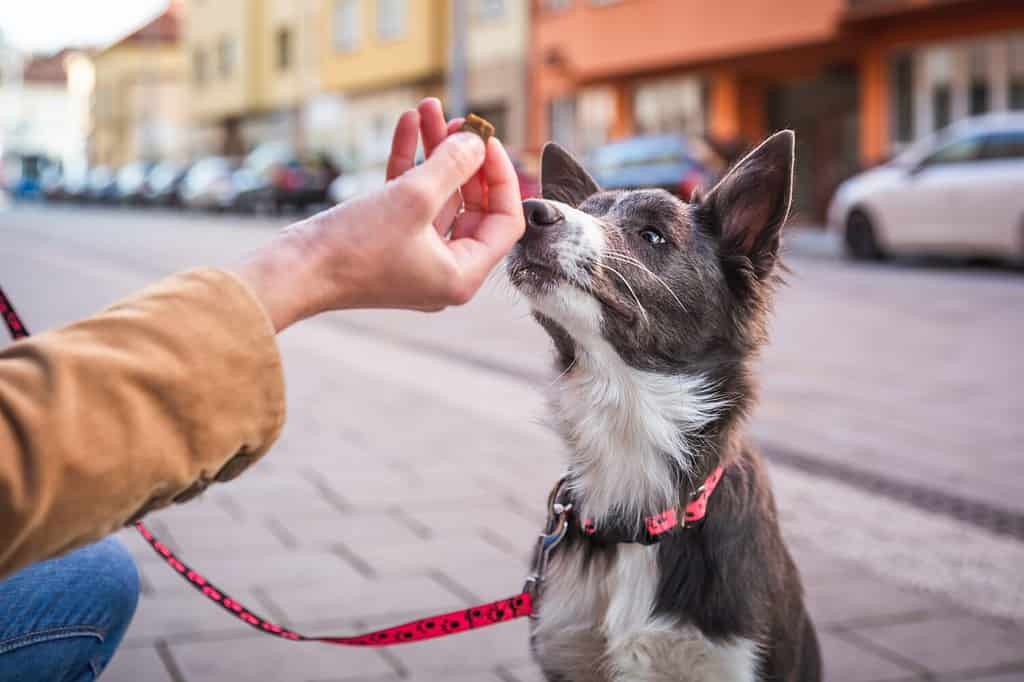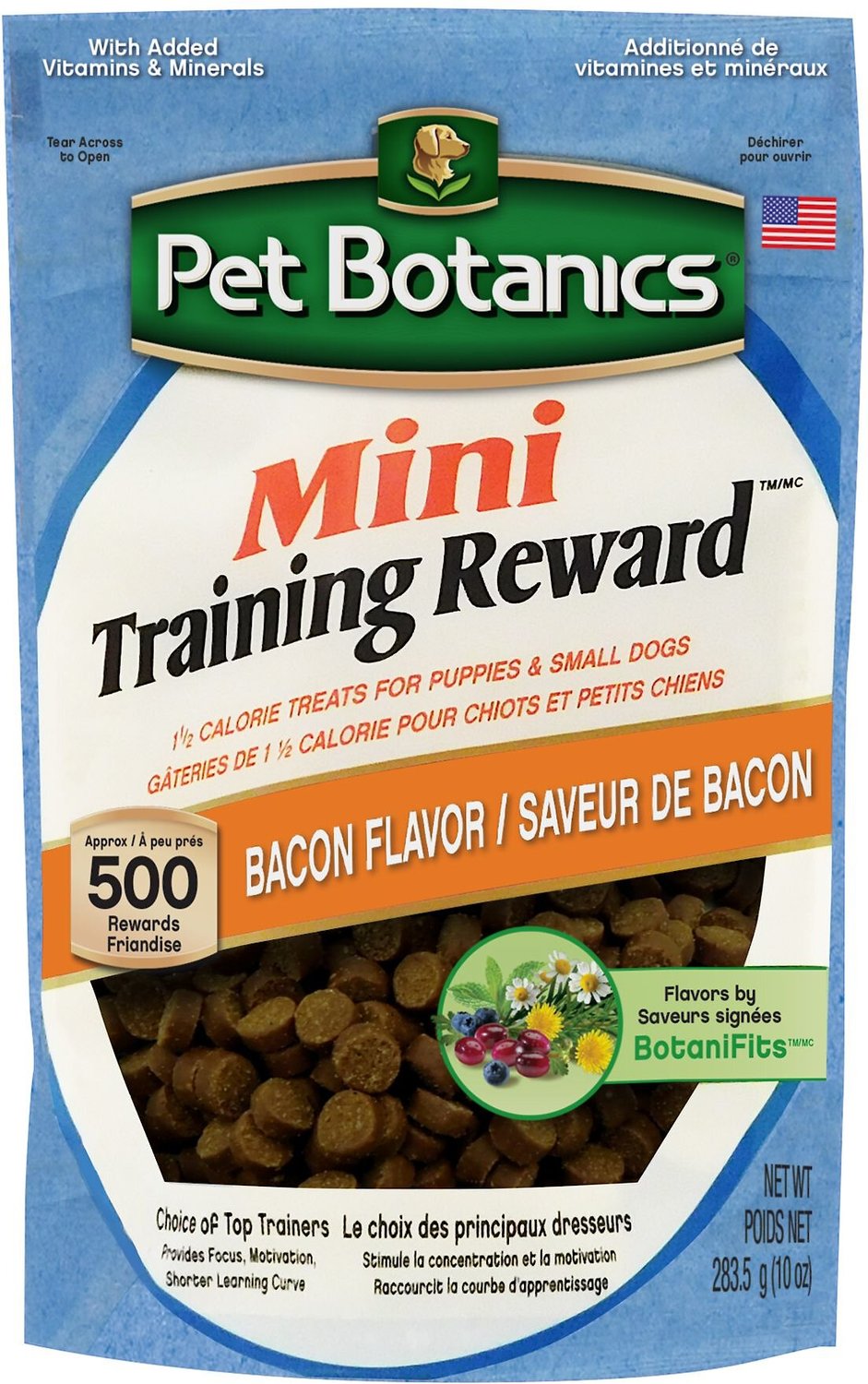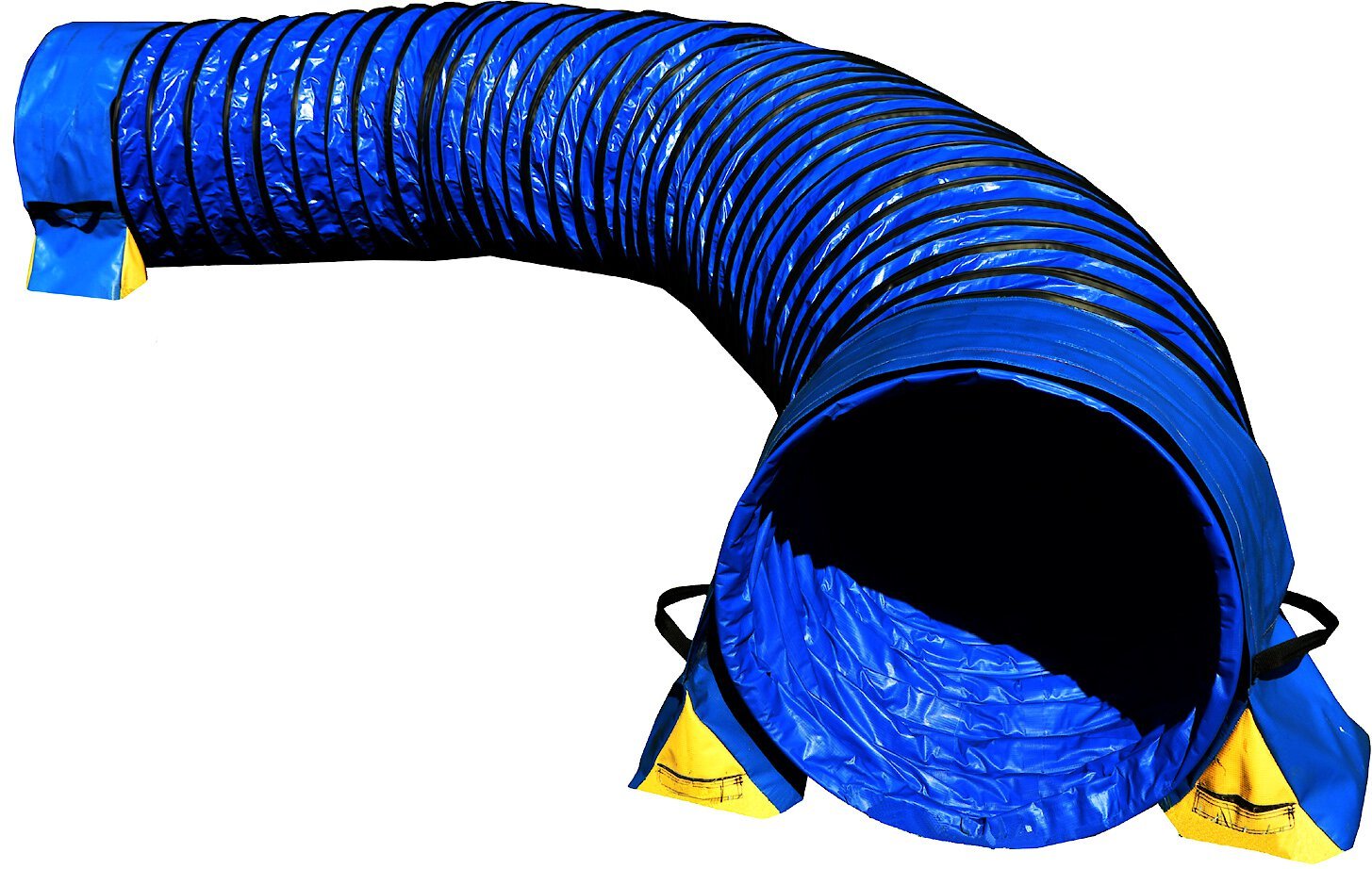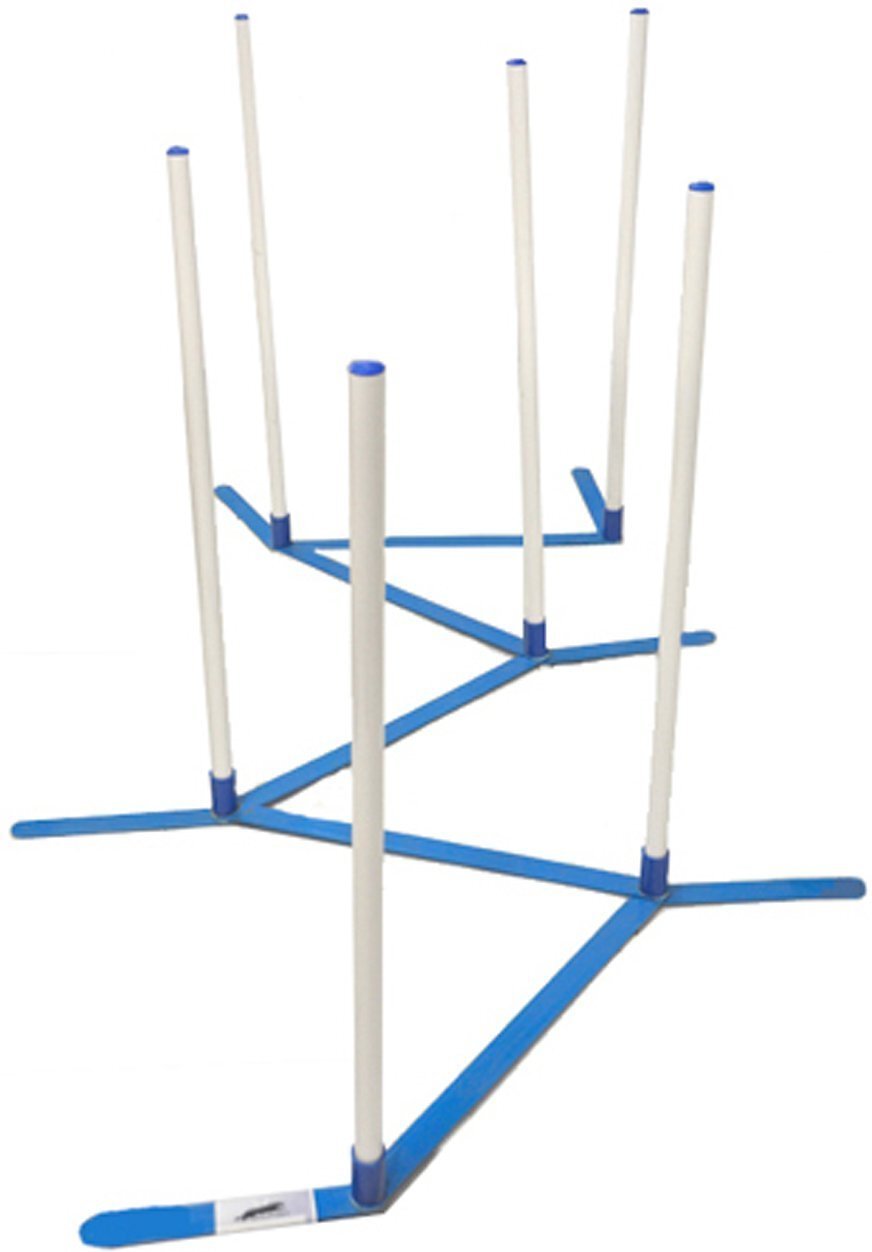While it’s only been around since 1978, dog agility is fast becoming one of the most popular dog sports. Agility features dogs and handlers who must navigate an obstacle course designed to test their skills. At the highest levels, it is exciting! These top-level competitors are amazing handlers with lightning-quick dogs.
Most of us will never reach that level, but who cares? The point of playing agility with your dog is that it is fun – if you are not having fun, why bother? This sport helps you develop a deeper relationship with your dog. The training involved only makes for a better-behaved dog that is a joy to be around. That is never a bad thing!
Even if you go to agility training classes weekly, you still need to practice at home. Although many beginning exercises don’t require equipment, a few do. So, let’s take a look at our list of equipment you absolutely must have to practice dog agility at home.
Treats

The best dog treats are small, smelly, soft, and easy to eat.
©ubaru/Shutterstock.com
Dog agility uses only positive reinforcement methods of training. You will shape the behavior with treats, then reinforce it by giving treats when they perform the behavior. We use a ton of treats. You will have days where you feel like a treat dispenser, but if your dog is learning and you are eventually weaning them off the treats you’re on the right track.
As for which treats to use, that depends on your dog and your budget! You can chop up hot dogs or chicken – they are cheap and readily available. The important thing is to use something you can cut into pieces about the size of your pinkie nail – even if your dog is huge. They need to be soft, smelly, and small enough that your dog can eat them in a flash.
I use a combination of cut-up meats, cheeses, and purchased treats. It depends on what we have at the moment. There are a couple of brands that my dogs love and come in tiny pieces perfect for training.
- A small treat that serves perfectly as a reward during training.
- Three flavors are available: bacon, beef, and chicken.
- Chewy sells two bag sizes: 4 ounces and 10 ounces.
- The packages are easy to care if you're training on the go.
Pet Botanics Mini Training Reward is one of the smallest treat sizes. Each treat is about the size of my pinkie nail and perfect for use in large quantities. Yes, you will use large quantities of treats! It’s okay! They offer bacon, beef, and chicken-flavored treats, and my dogs go nuts for the bacon. Because they are pre-made, they are less messy than chicken or hot dogs – definitely a plus!
Freeze-dried treats are an option if your dog must have a single-ingredient treat and you don’t want the greasy fingers that come from fresh treats. However, they are usually bigger pieces and take a little longer to chew. Dogs live in 3-5 second moments, so if it takes too long to chew, they sometimes forget why they got the treat.
Treat Pouch
There is nothing worse than frantically trying to get to a treat that you shoved in your pocket. Having a treat pouch clipped to your waistband or belt makes things so much easier! The best ones stay open when you want them open and close easily to keep little wet noses out of them.
I have used several over the years and have never really been in love with any of them. The Ruffwear pouch comes close. It is easy to use, I can slip my hand right in and out while the magnetic snap closes it for me.
Toys
Toys are invaluable in building excitement and drive in dogs that may be a little shy at first. It may take a little time to find the right toy, but we have a few ideas.
Tug Toys
Any tug toy will do! The key is making it special. This tug toy only comes out when you are training and goes away when you finish. Keep that excitement alive by stashing that toy between training sessions!
I have used everything from braided polar fleece to rope tugs – if you have a dog who loves tugging, it may not matter which one you buy, just keep it special.
Lotus Ball
This toy is an unsung hero for dogs who sort of like treats, sort of like toys, and sort of like chasing. It can help build play drive in dogs that have no interest in tug toys and help transition ball-crazy dogs to treats as rewards. You’ll always use toys in agility, but sometimes treats are necessary.
Made by CleanRun, one of the original agility equipment and book providers, Lotus Balls come in ball-only and tug-ball versions.
Bucket
You read that right! A bucket. No, it isn’t an agility obstacle, but it is an important training aid. We use these all the time to send dogs away from the handler. Many of our agility dogs are so handler-focused that we must teach them that it is okay to go elsewhere sometimes. It also helps when you are trying to teach them to go on in a straight line until told otherwise – it makes handling a little simpler.
I recommend picking up a couple of these because they can also help develop directional cues.
Jumps
This is one of the easiest items to get or make. In the beginning, you won’t set them higher than about your dog’s elbows – especially with younger dogs whose growth plates are not yet closed. After your dog is finished growing, adjust the jumps to your dog’s proper jump height.
You can make them yourself or purchase them online – if you make them, they need to be either four or five feet wide because that is what you will encounter in a live trial. Find plans online to make sure you have the right measurements.
Tunnel
Also called doggy cannons, tunnels are often one of the first obstacles dogs learn and the one they love the most. Something about these things makes dogs run faster than they normally run, sending the little athletes out like a cannonball!
You can pick up one of the cheap nylon kids’ play tunnels but be prepared to replace it often – if you understand and don’t mind spending on the replacements, they are a good starting point. They do not hold up to sharp little claws.
In case you want to spend more in the beginning but have a longer life we like the Cool Runners Lightweight Training Tunnel. This one comes with tunnel bags that you fill with sand to keep it from rolling around when your dog races through.
Weave Poles
I will preface this one with a slight caveat. Yes, you need weave poles for your dog agility practice equipment. They are not optional. However, enlist either a trainer or a more experienced agility competitor to help you learn to use them properly – online courses like those from OneMindDogs are also helpful. There is only one way a dog can enter weave poles in a competition that does not end in a fault: from the right with their left shoulder rounding the first pole.
There are dozens of videos on YouTube showing dogs entering from the wrong side, please do not follow those! Even if you think you will never enter a trial, do it the right way. That way, if you change your mind later, you don’t have to start from scratch.
These are my favorites for dog agility practice at home. They are very affordable, adjustable for training, and you don’t have to stick them in the ground at the right interval of 24 inches. It is very specific.
Ready to discover the top 10 cutest dog breeds in the entire world?
How about the fastest dogs, the largest dogs and those that are -- quite frankly -- just the kindest dogs on the planet? Each day, AZ Animals sends out lists just like this to our thousands of email subscribers. And the best part? It's FREE. Join today by entering your email below.
Thank you for reading! Have some feedback for us? Contact the AZ Animals editorial team.















